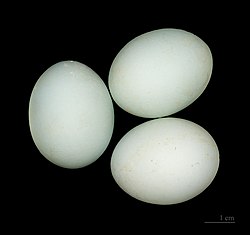| Squacco heron | |
|---|---|
 | |
| Ariège, France | |
| Scientific classification | |
| Kingdom: | Animalia |
| Phylum: | Chordata |
| Class: | Aves |
| Order: | Pelecaniformes |
| Family: | Ardeidae |
| Genus: | Ardeola |
| Species: | A. ralloides |
| Binomial name | |
| Ardeola ralloides (Scopoli, 1769) | |
 | |
| Range of A. ralloides Breeding range Year-round range Wintering range | |
The squacco heron (Ardeola ralloides) is a small heron, 44–47 cm (17+1⁄2–18+1⁄2 in) long, of which the body is 20–23 cm (8–9 in), with 80–92 cm (31+1⁄2–36 in) wingspan. [2] It is of Old World origins, breeding in southern Europe and the Greater Middle East.



